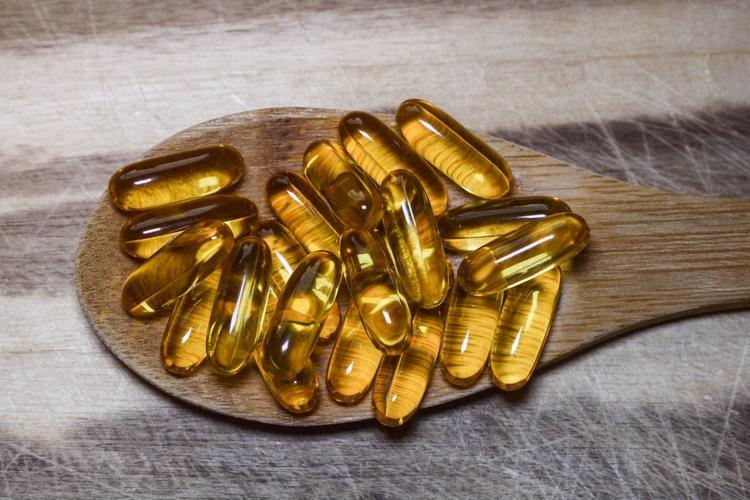
Evening primrose oil is a natural, plant-based supplement that has been used for many years to treat many different ailments. Unsure whether this natural oil will meet your needs? We’ve examined the potential benefits of evening primrose oil and the scientific evidence behind the health claims. Read on to see the potential benefits of this super plant oil!
What is Evening Primrose Oil?
Evening primrose oil is a natural supplement that comes from a plant (Oenothera biennis) which blooms at night.1 The plant has been used for centuries for a variety of conditions, from bruises and wounds to aches and pains.1 The active ingredient in evening primrose is the fatty acid gamma-linolenic acid, or GLA.1

What Does Evening Primrose Oil Do?
GLA is an unsaturated fatty acid, which means it’s heart healthy and has anti-inflammatory properties.2 GLA is extracted from the seeds of the evening primrose plant and sold typically in capsule form.
Similar to the widely available supplement Omega-3 fatty acids, GLA falls under the Omega-6 fatty acid classification. Due to GLA’s anti-inflammatory properties, people use it for a variety of skin and inflammatory diseases, from acne to menstrual cramps to rheumatoid arthritis.1 We’ll examine these common uses and the evidence that might support each application.
What are the Uses and Benefits of Primrose Oil?
Weight LossGLA, the active ingredient in evening primrose oil, has been shown to help prevent weight regain in formerly obese individuals.3 This study was based on the theory that different types of dietary fatty acids can influence the way the body stores energy as fat, and that obese individuals often have a different fatty acid distribution than those of normal weight.3
However, there haven’t been any additional studies encouraging evening primrose oil alone for weight loss, or weight gain prevention.
Acne, Eczema, and Psoriasis
AcneThere are several different types of acne with a variety of causes — pimples, blackheads, nodular acne, hormonal acne, and cystic acne. It’s theorized that a common cause of acne is a lack of essential fatty acids in the diet, leading to the assumption that evening primrose oil (and its GLA) could be beneficial in reducing the inflammation that acne causes.4
One study saw improvement in the number of acne lesions and severity with GLA supplementation.5 Currently, evening primrose oil is not a recommended treatment for acne itself, but can help with the cheilitis (dry, cracked, painful lips) caused by isotretinoin, a common acne drug.6
Eczema
When it comes to eczema, there’s a theory that the condition might be caused by a deficiency of GLA in the skin, leading to the natural assumption that an oil like evening primrose, naturally high in GLA, might be an effective treatment.7
There’s a study that showed an evening primrose oil supplement improved the itch, crusting, and redness of eczema after 4-8 weeks of treatment, but the effects were impacted by steroid use (a very commonly used treatment).8
Further research is needed to determine what effect the evening primrose oil alone has on eczema.

Menopause and Premenstrual Syndrome
Evening primrose oil’s GLA is involved in the production of prostaglandins, which act like hormones in the body. For this reason, it’s thought that evening primrose oil supplements may help ease or relieve symptoms related to hormonal changes like premenstrual syndrome (PMS) or menopause.9
To date, there’s mixed evidence supporting improvement in PMS symptoms (like breast pain or cramping), but there’s one study that supported its impact on hot flushes during menopause.1,9
The study found a slight improvement in the severity of hot flushes for women taking the supplement for six straight weeks, compared to a group who didn’t take evening primrose oil.9 This study was done on a small group of women, so additional research in this area is needed to solidify its effects.
Pregnancy
Evening primrose oil has long been used as a natural remedy to help induce labour late in pregnancy. However, there are no conclusive research studies proving that it has an impact on thinning the cervix and inducing labor.10
Evening primrose oil has been shown to have some blood thinning effects, and should be avoided in pregnancy as well as for people who are taking other blood thinning medications, according to the National Institutes of Health.1 For this reason, it’s not recommended for use in pregnancy.
Joint Health
Due to Evening primrose oil’s anti-inflammatory properties, joint inflammation disorders like rheumatoid arthritis are clear applications for potential use.
A study where patients took 6 months of GLA supplements showed significant and clinically relevant reductions in symptoms of rheumatoid arthritis, and the symptoms continued to improve when they took the supplement for up to 12 months.2
However, the doses used in this study were very high, which cautioned researchers that more evidence is needed before recommending evening primrose oil as a potential treatment.2
Two other inflammatory diseases, Raynaud phenomenon and Sjögren syndrome, are thought to have similar potential benefits from GLA supplements, but no evidence has supported this to date.11
Diabetic Neuropathy
Neuropathy, or loss of feeling, is one of the most debilitating effects of diabetes. It’s thought be linked to inflammation, leading to research on the potential benefit of evening primrose oil for diabetes.
Animal studies show positive results of EPO supplementation impacting both blood flow and nerve function.12 An older study showed improvement in many markers of neuropathy symptoms when taking linolenic acid, indicating a potential preventative and treatment effect for this condition.13 More recent and in-depth research is needed here.
Evening Primrose Oil Side Effects and Dosage
Side effects of supplementing with evening primrose oil include headaches and mild stomach upset (diarrhoea or nausea).14 The safety of long-term use of GLA hasn’t been established, but it may pose risks during pregnancy or in those taking other blood thinning medications.1
When it comes to dosage, the recommendations are typically based on previous research related to the condition you’re treating, which can vary greatly. A doctor or pharmacist can help you determine the most appropriate dosage.
If you have any underlying medical conditions or are taking other medications, it’s best to speak with your doctor before taking an over-the-counter supplement.
Take Home Message
While research on all of the potential benefits of evening primrose oil seems to be limited, there are some indications that it can be helpful with conditions like eczema, acne, rheumatoid arthritis, and diabetic neuropathy.
It’s clear that evening primrose oil’s GLA has an anti-inflammatory effect, and inflammation is to blame for many symptoms and ailments.
While the scientific evidence may be limited, evening primrose oil has been used for years as a homeopathic treatment for many conditions. There has been evidence to suggest its effectiveness in treatment of skin conditions, PMS symptoms, joint inflammation, and neuropathy. It may even help with keeping off extra weight.
Potential side effects are mild, and otherwise healthy individuals (who are not pregnant) might see improvement in inflammation-based symptoms with a high-quality evening primrose oil supplement.
Our articles should be used for informational and educational purposes only and are not intended to be taken as medical advice. If you're concerned, consult a health professional before taking dietary supplements or introducing any major changes to your diet.
- National Center for Complementary and Integrative Health. (2016, September). Evening Primrose Oil. National Institutes of Health. Retrieved from https://nccih.nih.gov/health/eveningprimrose
- Zurier, R. B., Rossetti, R. G., Jacobson, E. W., Demarco, D. M., Liu, N. Y., Temming, J. E., … & Laposata, M. (1996). Gamma‐linolenic acid treatment of rheumatoid arthritis. A randomized, placebo‐controlled trial. Arthritis & Rheumatism, 39(11), 1808-1817.
- Schirmer, M. A., & Phinney, S. D. (2007). γ-linolenate reduces weight regain in formerly obese humans. The Journal of nutrition, 137(6), 1430-1435.
- Kapoor, S., & Saraf, S. (2011). Topical herbal therapies an alternative and complementary choice to combat acne. Res J Med Plant, 5(6), 650-9.
- Silva, J. R., Burger, B., Kühl, C., Candreva, T., dos Anjos, M. B., & Rodrigues, H. G. (2018). Wound Healing and Omega-6 Fatty Acids: From Inflammation to Repair. Mediators of inflammation, 2018.
- Park, K. Y., Ko, E. J., Kim, I. S., Li, K., Kim, B. J., Seo, S. J., … & Hong, C. K. (2014). The effect of evening primrose oil for the prevention of xerotic cheilitis in acne patients being treated with isotretinoin: a pilot study. Annals of dermatology, 26(6), 706-712.
- Morse, N. L., & Clough, P. M. (2006). A Meta-Analysis of Randomized, Placebo-Controlled Clinical Trials of Efamol® Evening Primrose Oil in Atopic Eczema. Where Do We Go from Here in Light of More Recent Discoveries?. Current pharmaceutical biotechnology, 7(6), 503-524.
- Schlichte, M. J., Vandersall, A., & Katta, R. (2016). Diet and eczema: a review of dietary supplements for the treatment of atopic dermatitis. Dermatology practical & conceptual, 6(3), 23.
- Farzaneh, F., Fatehi, S., Sohrabi, M. R., & Alizadeh, K. (2013). The effect of oral evening primrose oil on menopausal hot flashes: a randomized clinical trial. Archives of gynecology and obstetrics, 288(5), 1075-1079.
- Bayles, B., & Usatine, R. (2009). Evening primrose oil. American family physician, 80(12), 1405-1408.
- Belch, J. J., & Hill, A. (2000). Evening primrose oil and borage oil in rheumatologic conditions. The American journal of clinical nutrition, 71(1), 352s-356s.
- Ford, I., Cotter, M. A., Cameron, N. E., & Greaves, M. (2001). The effects of treatment with [alpha]-lipoic acid or evening primrose oil on vascular hemostatic and lipid risk factors, blood flow, and peripheral nerve conduction in the streptozotocin-diabetic rat. Metabolism-Clinical and Experimental, 50(8), 868-875.
- Jamal, G. A., & Carmichael, H. (1990). The Effect of γ‐Linolenic Acid on Human Diabetic Peripheral Neuropathy: A Double‐blind Placebo‐controlled Trial. Diabetic Medicine, 7(4), 319-323.
- Kleijnen, J. (1994, Oct 1). Evening primrose oil. British Medical Journal. 309(6958): 824-825.

Claire is a Registered Dietitian through the Academy of Nutrition and Dietetics and a board-certified Health and Wellness Coach through the International Consortium for Health and Wellness Coaching. She has a Bachelor of Science in Biology and a Master’s degree in Clinical Dietetics and Nutrition from the University of Pittsburgh.
Talking and writing about food and fitness is at the heart of Claire’s ethos as she loves to use her experience to help others meet their health and wellness goals.
Claire is also a certified indoor cycling instructor and loves the mental and physical boost she gets from regular runs and yoga classes. When she’s not keeping fit herself, she’s cheering on her hometown’s sports teams in Pittsburgh, or cooking for her family in the kitchen.
Find out more about Claire’s experience here.






